Piet Oudolf, Reimagined
Dedicated local gardener Tony Spencer channels the aesthetic of the famed Dutch plantsman into his corner of the rural countryside of Mono.
We spent two years searching for a place in the country. Dreaming of an old stone farmhouse with wild-ish gardens and a pond where my near-amphibious wife, Troy, could swim.
She and I looked everywhere – high, low, online and off, at every point of the compass, and it nearly drove us out of our minds. We finally gave up, exhausted by the endless stream of generic bungalows and funky basements. That is until a horse-loving friend alerted us to something special up in a place called Mono.
Troy and I drove together up a long winding gravel lane through a leafy tunnel of birch and cedar wetland before crossing a bridge and then climbing ever higher until, there, nestled at the top of the hill, was an old log cabin with stately trees on either side.
The surrounding glacial terrain rolled down the hill to a sun-flecked, one-acre pond. On the near bank, a tiny guest bunkie looked out across the water to a towering curtain of conifers on the far side.
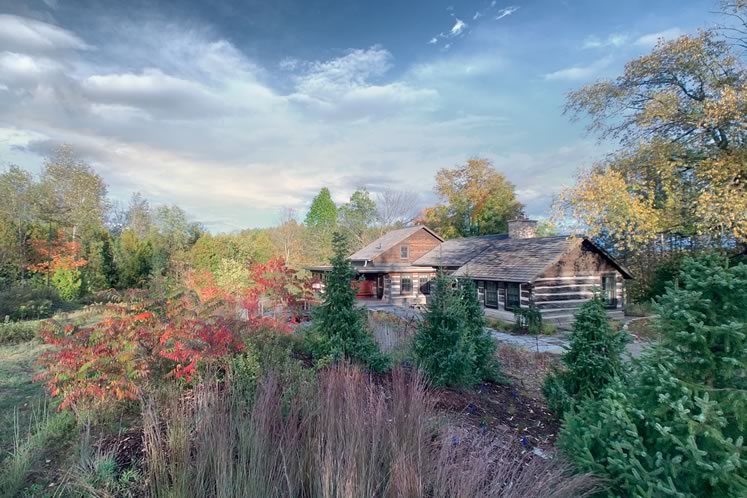
Looking eastward in early fall with little bluestem in foreground. Staghorn sumac holds the slopes, anchored by a quintet of Serbian spruce below (Picea omorika). Photo by Tony Spencer.
There were scant signs of any actual garden. It was more like a park-sized expanse of manicured lawn with a sprinkling of grand old trees fringed by forest beyond and wetland below. Not a neighbour in sight.
This is the land that found us. Far bigger than anything we’d imagined.
Troy, who’d been the toughest of critics of everything we’d seen, melted at first sight of the pond. And once I saw all the hiking trails leading out to the nearby hills, I too was convinced. We clinched the cabin and all its contents before anyone else could.
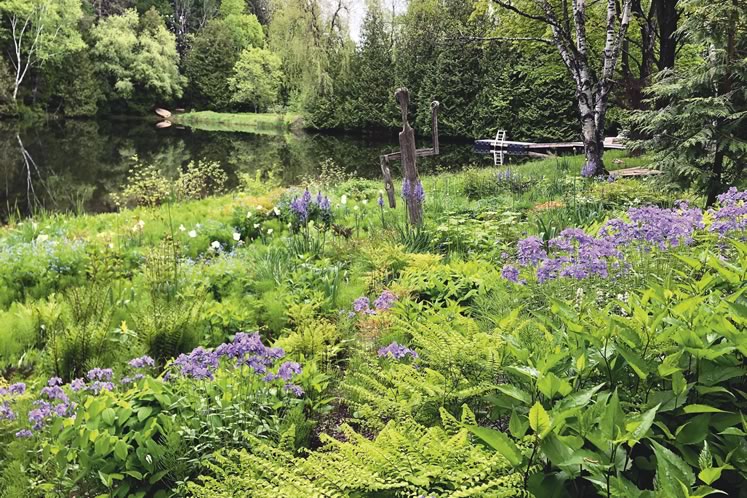
A matrix of native woodlanders lights up spring with phlox (‘Blue Moon’) and maidenhair fern, intermingled with white wood aster that blooms in fall. Photo by Tony Spencer.
The Dutch master’s apprentice
I’m a writer by trade who has gardened all my life. Twenty years ago my passion ran deeper as I discovered for myself the world of naturalistic planting design through the life work of Dutch landscape designer Piet Oudolf.
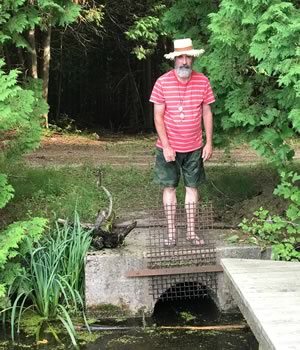
Tony Spencer, aka The New Perennialist, with full lockdown beard checks on the pond spillway. Photo by Peter Mettler.
Still a creative force in his mid-70s, Oudolf envisions his gardens as living art forms designed to evolve in time and space. He does it all with trees, perennials and grasses, meticulously orchestrated to evoke the illusion of wildness, exemplified by signature projects such as the High Line in New York and The Lurie Garden in Chicago. His gardens are charged with a sense of atmosphere where people can transcend the everyday to reconnect to nature lost within.
I was determined to try and translate his approach to a smaller-scale garden. I spent years experimenting at our old family cottage garden in the Kawarthas, teaching myself the new language of designing with plants.
In 2013, I went next level and travelled to the Netherlands to study New Perennial planting design with Oudolf himself at his garden home in Hummelo. It was a transformative experience where we became friends and he kindly introduced me to a whole circle of designers exploring the naturalistic frontiers in Europe, the U.K., South America, the U.S. and beyond.
Here in Mono, I’ve started to make this kind of garden a reality with my own northern twist.
Big picture thinking
Year one at the cabin, Troy and I decided to simply live there without changing a thing. We quietly observed the land and sky, hiked in the hills, and let the manicured grass grow into a fuzz of natural meadow.
Mounting worries about the cabin’s rotting cedar shake roof and derelict furnace foreshadowed an unexpected leap into a massive two-year renovation to restore the original cabin and expand it with a new addition. Best thing we ever did.
We worked closely on the cabin project from concept through execution with Andrew Jones, a brilliant TO architect and furniture designer, for whom big picture is second nature. We paired Andrew up with dream contractor Scott Murray of Thistlewood Timber Frame Homes in Markdale, who brought hard-earned experience and a way with wood to lead the intensive reconstruction.
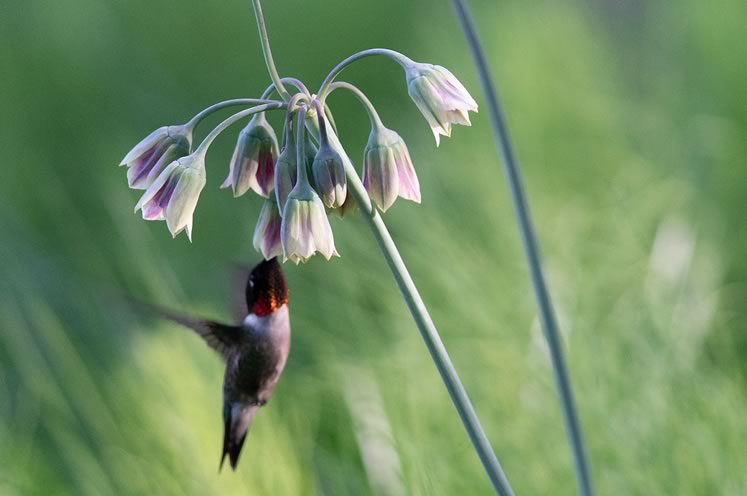
Ruby-throated hummingbirds visit frequently in early summer to nectar on Sicilian honey garlic (Nectaroscordum siculum), a lesser known member of the onion family. Photo by Tony Spencer.
Meanwhile, Troy and I camped out in the tiny bunkie by the pond, quite enamoured by the charms of micro-living while the hammers, drills and tablesaws buzzed away up the hill.
Pond life
In the meantime, I began my first solo garden design project in earnest on the western bank of the pond. I poured all my learning into the planning and plant lists to create a supercharged slice of woodland garden plugged into the existing ecosystem.
The project started in my imagination – I wanted something that felt a little wild, otherworldly, unexpected – a hidden place with a charged atmosphere connected to the greater scale of pond, forest, sky.
On a parallel track, I conducted a site analysis to better understand the local ecology and conditions – a critical step at the outset of any project.
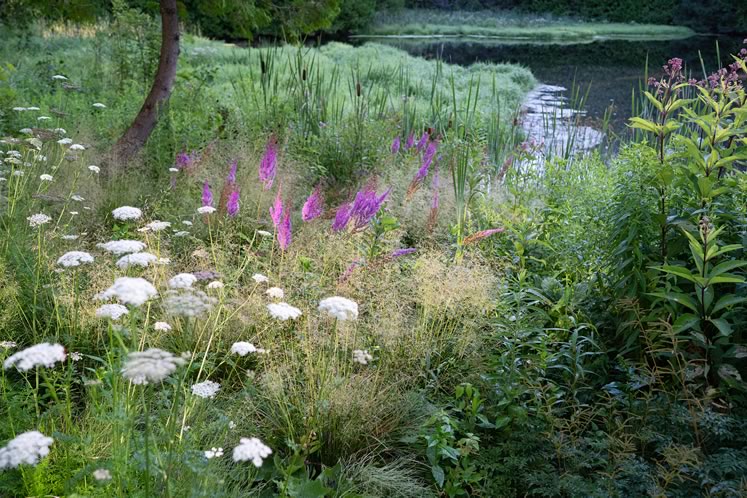
The pondside matrix with tufted hair grass (‘Goldtau’) and purple spires of astilbe (‘Purpurlanze’) softened by the white umbels of milk parsley (Selinum carvifolium). Photo by Tony Spencer.
The garden took more than two full seasons to fully design and plant – with the benefit of stellar advice from Piet Oudolf himself during the initial design phase. Now maturing into its fourth year, the pond garden has come to embody my vision for wildscaping beyond anything I can write or say.
It’s not just for show. The garden is a conversation with nature offering the species diversity and structural complexity (i.e., food and shelter) to help the pond attract and support a growing population of insects, amphibians, reptiles, birds and small mammals.
Here are my four guiding principles:
- Plants selected primarily for structure vs. flower colour; as blooms come and go, the essential structure remains.
- Freely combines native, near-native, and introduced plant species for the best of all worlds. No invasives.
- Designed to capture light and movement from the wind.
- Not fussy. It leaves messy areas and room for nature to happen.
Hardscape design: Tabula rasa
Post-construction, all that was left of the landscape around the cabin was glacial sand and our two massive trees, their root zones protected during the building process.
This gave architect Andrew Jones and I the freedom of a blank slate to reimagine the hardscape both from a functional and aesthetic perspective. Our challenge was to reintegrate the newly renovated cabin within the total landscape and relate the indoor and outdoor spaces. We decided on a curvilinear approach to the hardscape because it reflects the natural roll of the escarpment land and the country feel of the cabin.
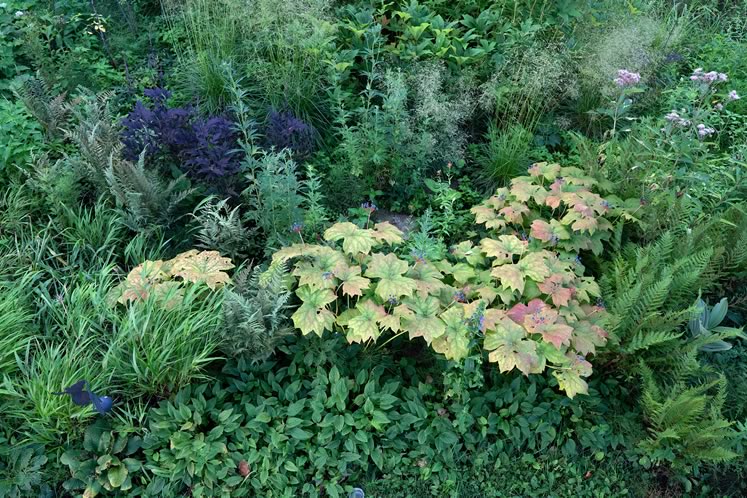
A ladder-top view shows the textural interplay between shady moisture-lovers, like umbrella leaf, lady ferns and others, fringed by creeping forget-me-not. Photo by Tony Spencer.
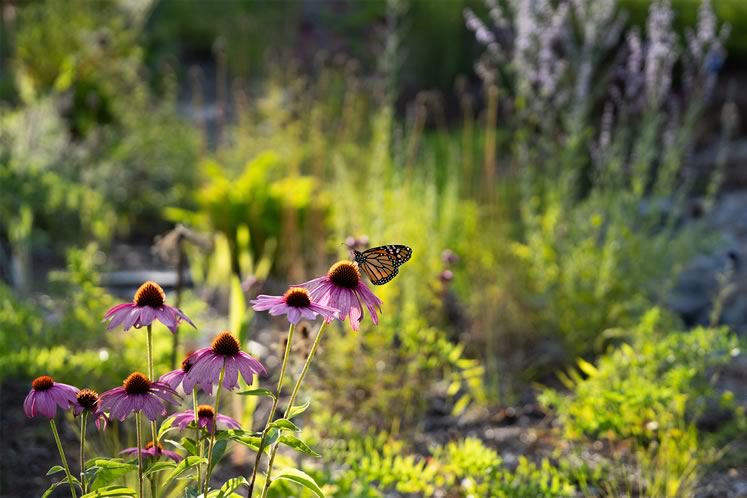
A monarch butterfly alights to nectar on one of the many coneflowers (‘Prairie Splendor’) seeding about the sand garden. Photo by Tony Spencer.
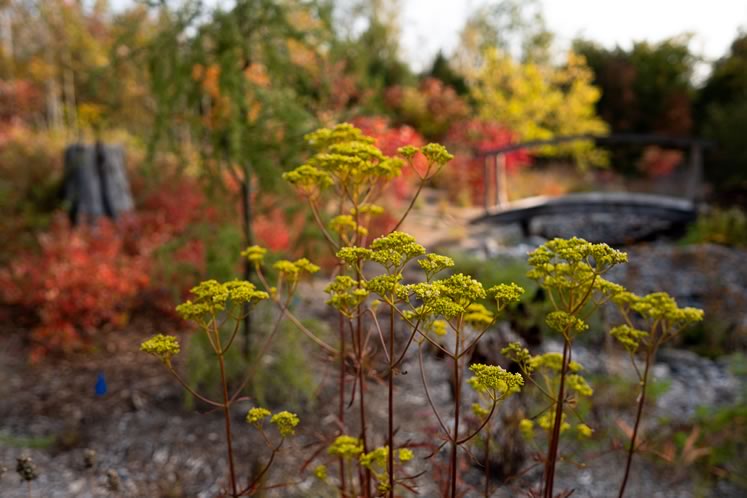
Fall colours set off the perennials: Dark red stems of golden valerian suffuse the warm orange glow of fragrant sumac (Rhus aromatica ‘Gro-Low’). Photo by Tony Spencer.
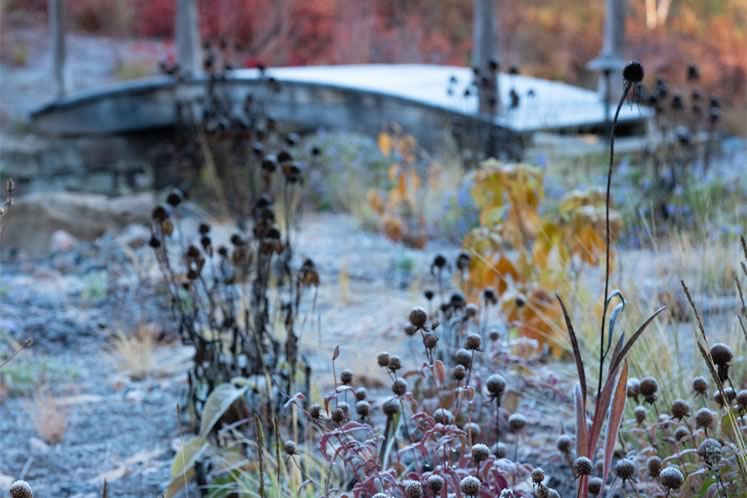
Hoarfrost in late fall crystallizes the dotted seed heads of eastern beebalm and various coneflowers. Photo by Tony Spencer.
We found just the right touch of inspiration in the serpentine curves of a rustic dry-stack retaining wall built right outside our bedroom window by Mono stonemason Brian Wood.
Our hardscape plans checked off a wish list of major elements including all paths and walkways, entertainment areas, stairways, fire pit, and a long sinuous bioswale designed to capture stormwater runoff from the cabin and slopes.
From my plant design perspective, this also meant creating strategic space for a series of significant plantings around the cabin, all designed to capture sightlines from multiple viewpoints, especially from inside the cabin and our screened porch.
With Andrew’s plan ready to go by early 2017, we chose Genus Loci, an ecological landscape design/build company from King City, as partners to construct the actual hardscape. They brought a strong background in sustainable design practices and ecological sensitivity to the project along with particular flair for the regrading and stonework.
We chose all local materials for the hardscape with massive limestone and granite boulders, supersized slabs, and pink and grey sandstone, sourced from an old-time, Credit valley quarry along the escarpment. Foot traffic areas were finished with either pea gravel or mulch.
I looked after all aspects of the planting design, with invaluable guidance in the selection and planting of trees and shrubs from 81-year-old, Swiss-trained, master gardener Paul Ehnes from Erin. This provided the structural framework we needed to gradually bring the landscape back to life with a series of naturalistic plantings created in a variety of contexts and scales.
Here’s a walking tour of work to date.
Northern sand garden & bioswale
Sand. Sun. Heat. Evil storms. Angelic light. The polar opposite of the pond garden and larger, this bone-dry xeriscape required a functional strategy to create habitat tough enough to handle extreme conditions but peppered with unexpected bursts of beauty.
Hardscape: After regrading the land to sculpt more natural slopes and drainage patterns, Genus Loci built the wide slab and flagstone entry walk leading to the back porch. The slopes create a natural amphitheatre for the plantings, complete with a hollow cedar stump rescued from the wetlands to conceal the well. We also carved out a long serpentine bioswale reinforced with dams of boulder, river stone and coir logs to capture and absorb stormwater runoff from the roof and slopes. All set off by a handcrafted wooden bridge discreetly illuminated at night.
Trees and woodies: To create year-round structure and fall glory, we framed the area with Serbian spruce (Picea omorika), stands of native sumac (Rhus typhina ‘Laciniata’ and R. aromatica ‘Gro-Low’), and river birch (Betula nigra ‘Cully’) to hold the slopes and connect with the forest beyond. Closer to the cabin, there is sassafras albidum and a gnarled specimen of ‘Horstmann’s Recurved’ larch.
Planting design: I wanted the garden to feel at once magical and bewitching, choosing a stark palette of spiky and twisted plants, ecologically adapted to the setting. Designed as a grass matrix planting on sloping ground, this will eventually feel more like meadow with taller perennials poking up through large sweeps of prairie dropseed (Sporobolus heterolepis) and autumn moor grass (Sesleria autumnalis). There are mosaic clusters of seasonal accent perennials scattered throughout. Little bluestem (Schizachyrium scoparium) forms the matrix in the bioswale rain garden and has also been seeded into the upper slopes. Wildly attractive to beneficial insects, all the selected perennials and grasses grow in pure sand with no amendments. A layer of pine mulch keep weeds down to minimize maintenance.
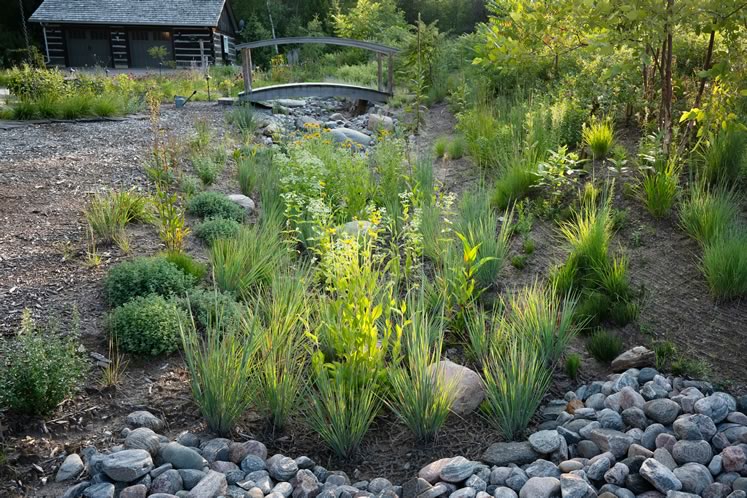
Little bluestem (‘Standing Ovation’) forms the grass matrix in the bioswale rain garden, interplanted with black-eyed Susan and mountain mint (Pycnanthemum muticum), among others. Photo by Tony Spencer.
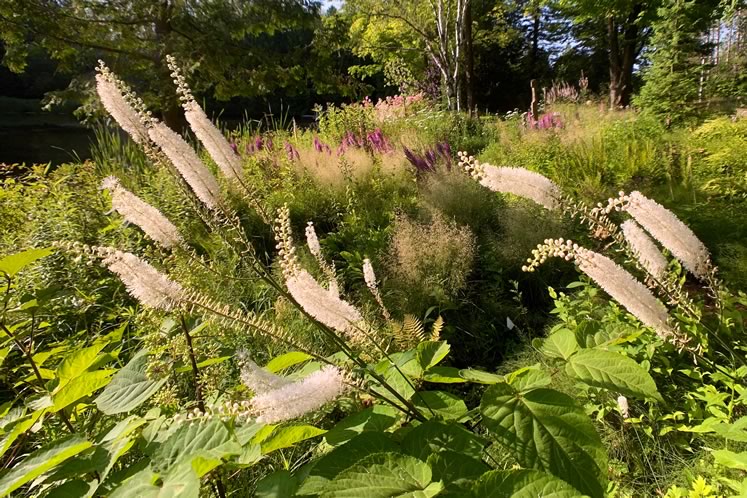
A native stunner for a shady woodland, the white wands of black cohosh rise like slow-motion fireworks out of the bog garden. Photo by Tony Spencer.
The fern pit
There is an almost Japanese aesthetic to the plantings in the courtyard – overlooked by our screened porch which has chiselled beams and red lacquer trim. It’s an unexpected change of atmosphere and exercise in understatement, wabi-sabi style.
Hardscape: We carved out slopes on both sides to enclose the inner courtyard and set large rough limestone steps leading down to the stone-circled fire pit. Fieldstone retaining walls and stonework on the house are the expert work of Brian Wood.
Trees: A few specimen trees provide multi-seasonal interest and match the aesthetic, including multi-stemmed stewartia (Stewartia pseudocamellia), renowned for its peeling bark and fall colour, and a hardy cultivar of Korean maple (Acer x pseudosieboldianum ‘First Flame’). The northern slope repeats the native sumac found elsewhere and a single weeping European larch (Larix decidua ‘Pendula’) graces the steps on the opposite side.
Planting design: Captivated by how native sedges (Carex species), ferns and mosses grow along the trails of the escarpment, I created a mixed sedge and fern matrix on the steep north-facing slope under our majestic sugar maple. The zen plantings accentuate the nubbled limestone surfaces with a minimalist focus on form and texture. The only flower that blooms is Epimedium ‘Amber Queen’ in spring. Sometimes, simple is best.
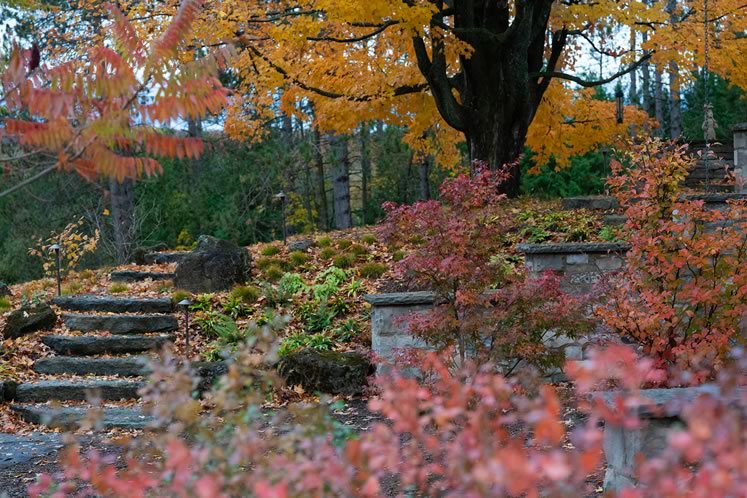
A luminous fall display at the fern pit with Asian specimen trees sheltered in the stone courtyard. A twisted old sugar maple stands guard up the slope. Photo by Tony Spencer.
The ovals
My 2020 summer lockdown project was to make a pop-up naturalistic pollinator garden in the two oval island beds directly in front of the cabin. In true lockdown style, I worked with whatever plants happened to be hanging around to create a seasonal banquet for insect life and complete the view looking out from inside the cabin and from down the lane.
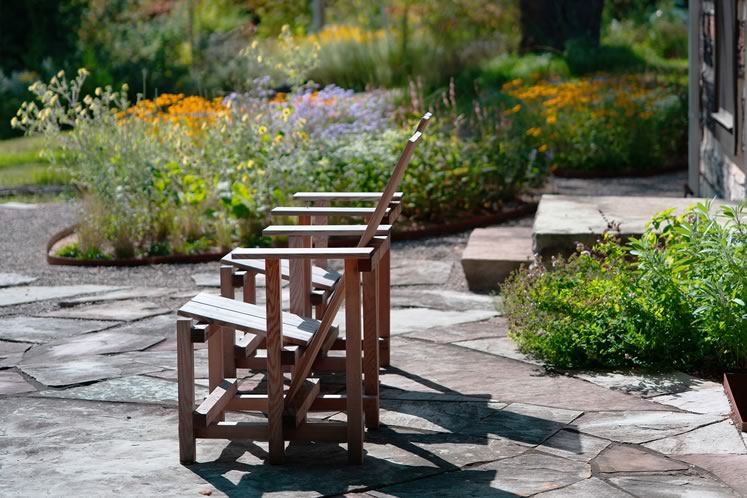
Wave Hill chairs welcome visitors to the sandstone terrace. The ovals beyond are freshly planted with pollinator-friendly perennials with a massive black cherry overhead. Photo by Tony Spencer.
Hardscape: The island beds are edged with rusted Corten steel for a contemporary look.
Planting design: In this micro distillation of naturalistic style, a single tall moor grass (Molinia caerulea subsp. arundinacea ‘Windspiel’) in each bed catches every breath of wind and light. Larger groupings of perennials repeat with a mix of native and near-native plants timed to produce nectar and pollen from early summer to fall. All planted in pure sand, part sun, with extra tight spacing to fill in fast in 2021.
The ungarden
Everywhere else on the property, I am busy ungardening. That means not doing much at all and letting nature have its way. The former lawn has grown into meadow to create wildlife habitat on a massive scale. It gets mown once a year in late spring to create walking paths and then gets left alone. This is something anyone can do (or not do) to help attract and support the web of life in this fantastical place we call home.
More info
Wildscaping is about using plant-driven landscape design to create and sustain dynamic garden spaces, filled with beauty and wildlife, to rekindle our relationship to the natural world.
A New Perennial garden ethos: Reduce garden inputs, recycle garden outputs; design with biodiversity and maintenance in mind; group plants by common habitat; work with local conditions; invite spontaneity; use plants as a living mulch to cover ground; create a true four-season garden leaving plants to stand over winter and amend in their own debris.
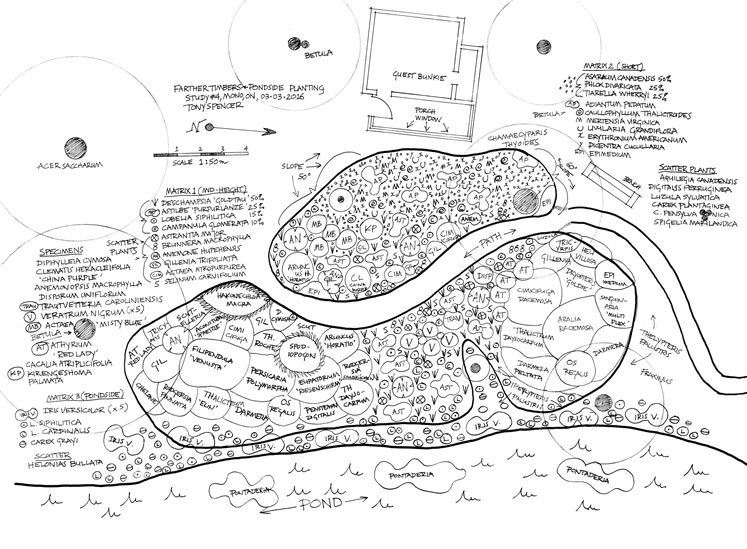
The final version of the planting design for the perennial pond garden. The guest bunkie looks out at the garden below with woodchip path snaking through the middle. Click for full size image. Photo by Tony Spencer.
What makes this garden interesting?
- It is a full-blown naturalistic garden with aesthetics inspired by naturally occurring plant communities.
- This is a garden for plants and people. For plants to thrive and for people to experience.
- The pond is a living mirror. A source of life and reflection.
- Anything but flat, the undulating natural landform creates different levels and microhabitats.
- It’s designed to be viewed from above, up close and far away.
- All individual species of plants, grasses and ferns are intermingled within plant communities.
Related Stories

A Purposeful Garden
Mar 23, 2015 | | LeisureMisha Dubbeld’s gracious Mono garden is a testament to 20 years of love and labour. With all that she’s learned, her latest project is conceived on a grand scale.
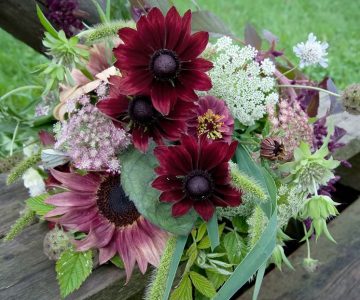
Life at a Flower Farm
Mar 19, 2019 | | FarmingMeet the women behind the blooms at Petals Flower Co., Purple Hill Lavender Farm, Stonewell Farm, Broadside Flowers and Caledon Hills Peony Farm.
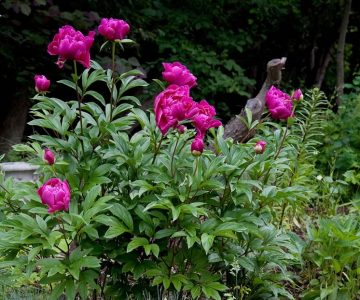
Accidental Gardeners
Mar 24, 2020 | | LeisureWith trial, error, dumb luck – and joy – two neophytes transformed four acres of bramble and meadow into a painterly Hockley garden.
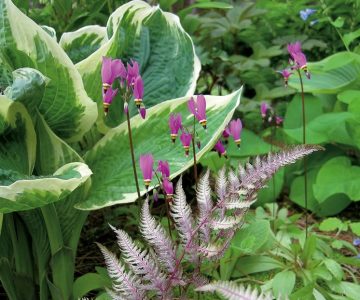
Matches Made in Heaven
Mar 21, 2016 | | LeisureHow Lorraine Roberts conjures up dreamy landscapes using colour, shape – and an appetite for surprise.
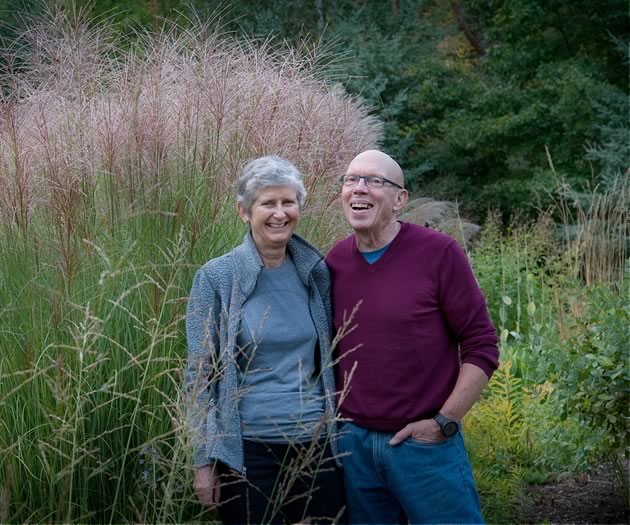
A Botany of Desire
Mar 20, 2017 | | LeisureGardener Liz Knowles’ passion for rare yet rugged alpine flora has transformed her Mono gardens into more than an aesthetic triumph. They’re an aide memoire of her life and travels 40 years on.
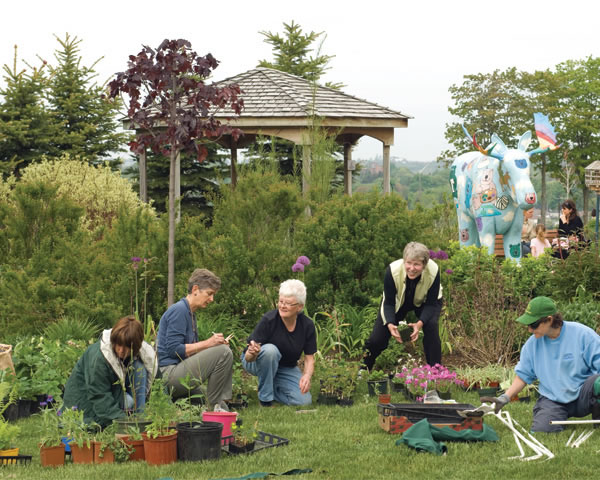
Healing Gardens
Jun 20, 2008 | | LeisureA group of extraordinary gardeners have created a natural balm for Headwaters patients.
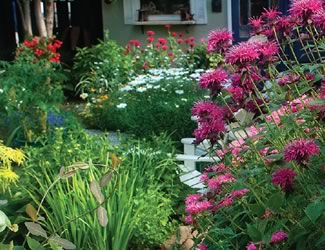
Secret Gardens
Mar 24, 2011 | | LeisureFrom the street you’d never know it – but behind these two Orangeville homes are gardens of magical delight.
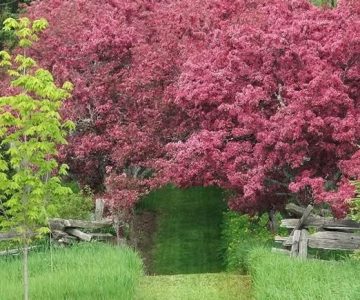
Spring at Lilactree Farm
Mar 23, 2012 | | LeisureAn allée of ‘Profusion’ crabapples at Lilactree Farm in Mulmur.
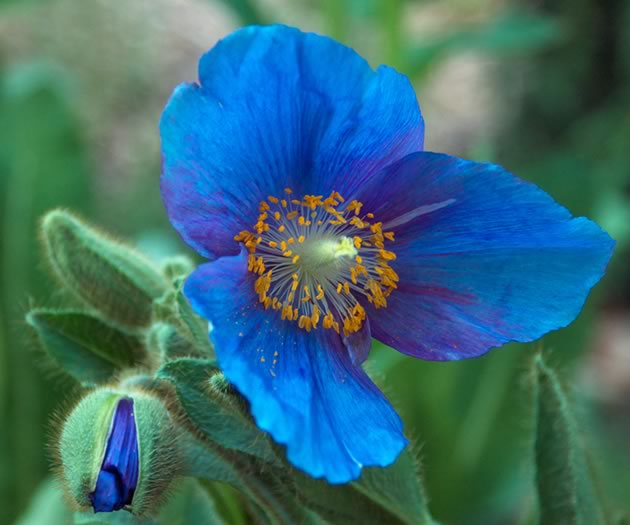
Stars of Larkspur Hollow
Mar 20, 2017 | | LeisureUp close and personal with some of the stars of Liz Knowles’ garden – many of them from alpine destinations in Central Asia, China and India.
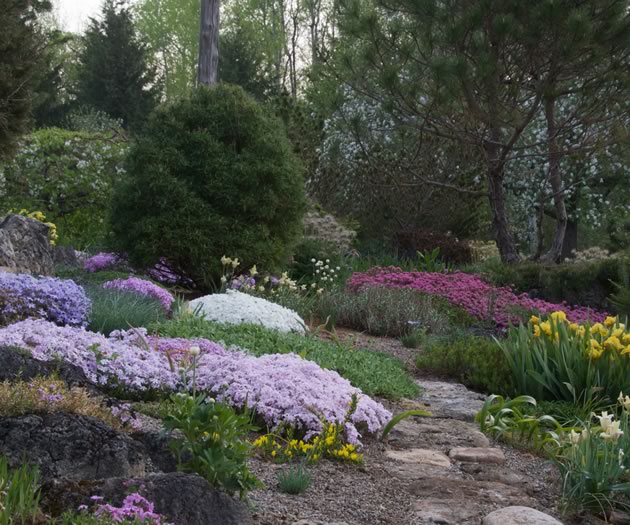
Take a Tour of Larkspur Hollow
Mar 20, 2017 | | LeisureAt their garden in Mono, Liz and George Knowles garden with an eye to all four seasons.
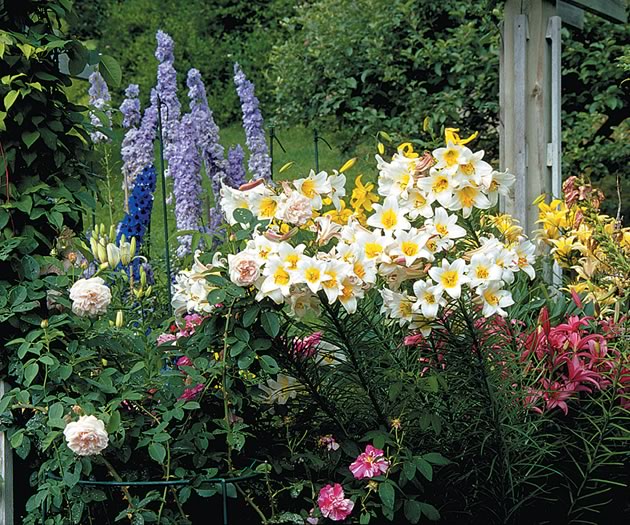
The Artist’s Garden
Mar 21, 2003 | | LeisureArt and gardening inspire each other to superlative effect in the botanical pursuits of two local artists.
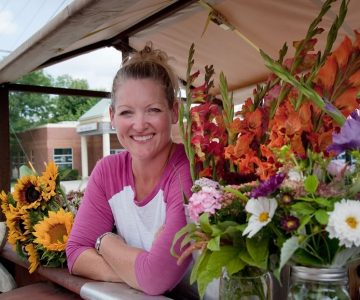
The Florist Farmer: Petals Flower Co.
Mar 19, 2019 | | FarmingMelanthon’s Amber Swidersky creates lush bouquets with blooms just steps from her floral studio.









